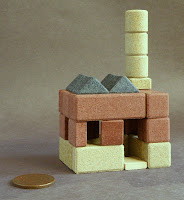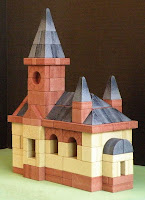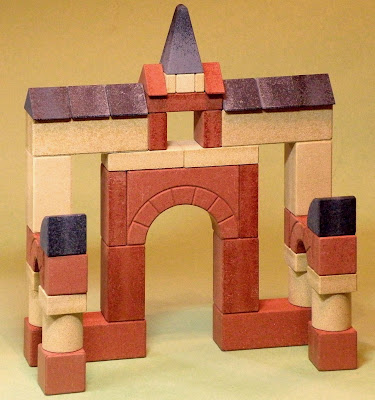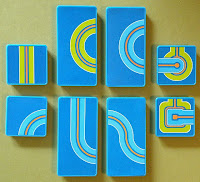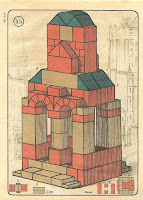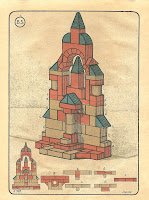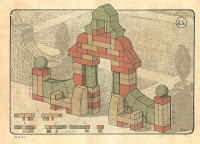
I didn't take the picture above, and didn't build the buildings, but both still have something to do with Block Play.
The town seems to be
Saaleck, Germany, and the picture was taken for me by a friend on a bicycle trip. My interest in trains was the motivation for taking the picture, but the result is something much greater than just a nice train picture: The valley and the village and the patterns of woods and fieldsall entice and delight.
I have always especially enjoyed pictures like this in books and magazines, and I especially enjoyed vies like this when I lived in Germany.
But for the Block Play connection, we need to look closer - look at the colors of the buildings in the village: white with red roofs, yellow-tan with red roof. Some do have dark, perhaps gray but maybe weathered red, roofs. At least one is a new dark gray roof.
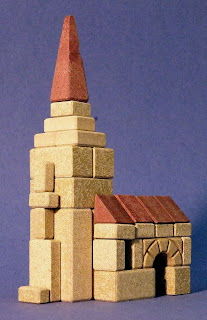
The church has a green roof - the onion dome is almost certainly copper sheeted, weathered to verdigris, the pitched roof probably is. If they aren't, then the roof treatment was deliberately chosen to resemble verdigris.
In other parts of Germany, brick houses are not uncommon, but in many areas, they also have red roofs - but typically a more orange red of tile, contrasting with a darker, browner red in the brick.
In other areas, may buildings, especially of the types often represented in Ankerstein designs, are light or dark gray, often also with verdigris roofs.
Wouldn't it be fun if we had the opportunity to build Anchor stone constructions in these alternate color schemes?
It is possible in GK to build a red roof using either red roof stones borrowed from other makers sets, or using the Anker 210R half thickness stones. Or we can build in "HK," with Kleine Gernegroß stones supplemented with loose stones.
That is what I have done in the church above, based on
ASC G24 converted in color scheme and extended a bit with extra stones from
The ToyHouse.
Building with a green roof, or gray structural stones would be an even bigger challenge as things stand.
Anker offers to make stones in alternate colors as special orders, with a setup fee that jacks the cost per stone up for small orders. I suspect the way to start is with some interested parties pooling to order a few basic stones in the alternate colors. Anyone interested?
Ultimately, one might hope for a special edition set or two.
To me,
Set 4½ would be the ideal size - big enough to show off the roof color, small enough to be affordable. But Set 6 would probably be more realistic, with plans available for it in digital (CAD not scanned) format, which could comparatively easily be redone in different color schemes.
A pipe dream probably, but it sure would be fun.
In the meantime, my supplemented KG set lets me do some alternate-reality Anker building.
Good Block Play.












